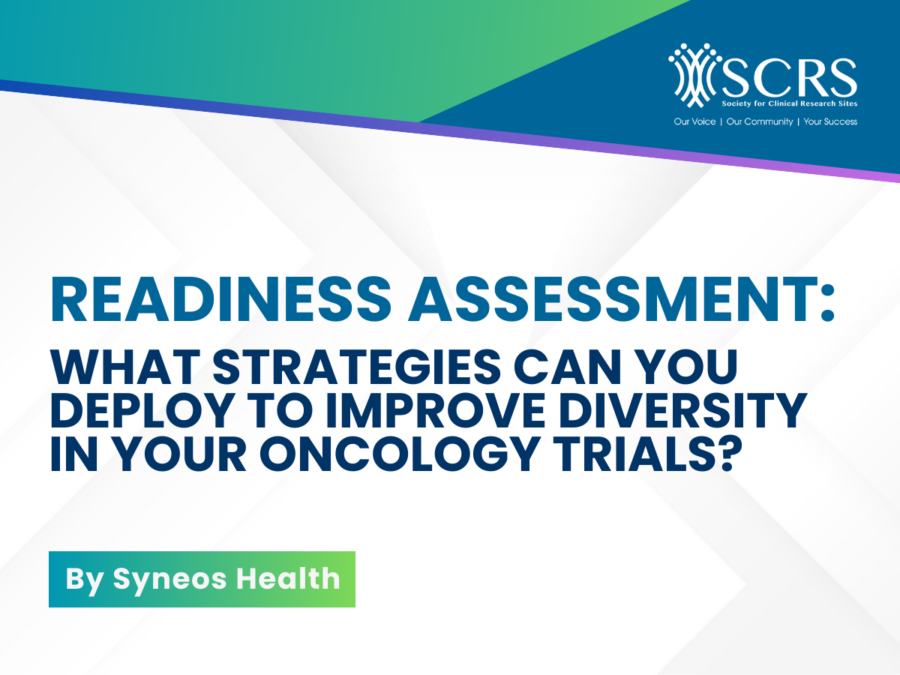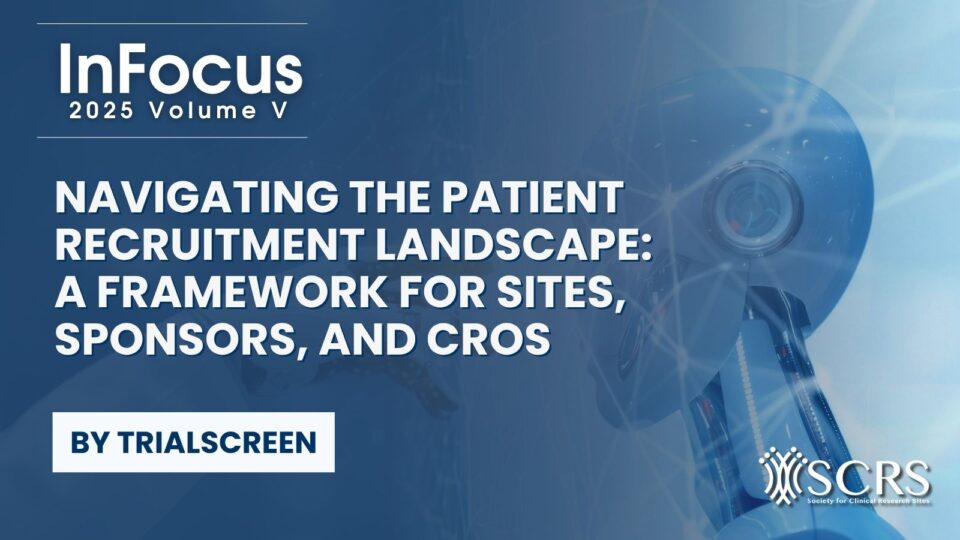Readiness Assessment: What Strategies Can You Deploy to Improve Diversity in Your Oncology Trials?

Outlining five strategies to ensure mandated requirements for diversity in oncology clinical trials are not just met but become a cornerstone of clinical trial operations for better patient recruitment, retention and outcomes.
The efficacy and safety of oncology therapeutics can vary significantly across different demographic groups, including race, ethnicity, age and sex. Historically, oncology trials have not always recruited patients that best represent those most likely to be affected by the cancers being studied, impacting the generalizability of findings and the development of effective treatments. In the evolving landscape of cancer research, prioritizing diversity, equity and inclusion (DE&I) is a regulatory and ethical necessity to ensure all communities benefit from scientific advancements.
Recent legislative changes, like the Diverse and Equitable Participation in Clinical Trials (DEPICT) Act mandated by the FDA in 2022, require sponsors to submit a detailed diversity action plan for all Phase III trials. This requirement is not merely procedural but is essential for designing oncology trials that accurately reflect real-world demographics, particularly as treatments increasingly rely on personalized, genetic-based strategies.
In a 2024 discussion, experts from Syneos Health emphasized the need for robust DE&I strategies in oncology trials. The following five strategies were identified as critical for integrating a diverse patient population into the operational philosophy of clinical trials, thereby enhancing recruitment, retention and treatment outcomes.
#1. Regulatory Alignment: Adapting Strategies to Meet and Exceed Requirements
To guarantee trials are inclusive as the diseases they aim to treat, it is essential for developers to acknowledge regulatory requirements and adapt their clinical trial protocols. Trials need to be designed with flexibility in mind to accommodate a diverse patient pool, with methods like:
- Reviewing inclusion and exclusion criteria to ensure protocols do not unnecessarily restrict patient variety. It’s important to ask, “Does this protocol as it is written allow me to recruit a more diverse patient population?”
- Evolving protocols based on site feedback and real-world experiences by encouraging sites to bring ideas forward during the early stages of product development to ensure trials are practical and inclusive.
- Engaging in broad stakeholder feedback with sponsors, CROs and sites to succeed in implementing diversity plans and measure the effect of the improved diversity and the patient outcomes because of the implemented strategy, without losing the scientific rigor of the trial.
#2. Site Empowerment: Providing the Tools and Resources They Need
For clinical trial sites to prioritize recruiting and enrolling a patient population that mirrors real-world demographics, they need to be empowered with tools and resources necessary to facilitate outreach, adjusting eligibility criteria, and reduce barriers to participation. This can be achieved, using site-centric approaches such as:
- Providing the tools and support materials for referral campaigns and community engagement, especially in oncology where direct patient outreach may not be appropriate.
- Implementing roles such as nurse navigators and pharmacy navigators to assist patients throughout the trial process.
- Promoting collaboration rather than competition among sites, potentially through “lunch and learn” sessions or consortiums, to share knowledge and resources.
- Creating feedback loops to hear and act on site concerns and suggestions and be open to adjusting protocols and processes based on this feedback.
#3. Patient-Centric Operations: Ensuring Resources are Utilized Effectively
By ensuring resources are utilized effectively and recruitment reflects the diversity of the community, clinical trials can be more patient centric and therefore more effective. This is achieved with approaches such as:
- Offering platforms such as patient portals and apps that can offer trial-related information, direct support, and reimbursement management, making it easier for patients to participate in and navigate through the complexities of a clinical trial.
- Embracing decentralized trial solutions to minimize barriers to participation, such as travel burdens. These solutions can include mobile health facilities, home nursing, and local lab testing.
- Integrating EHR data with trial databases to streamline data collection and reduce the administrative burden on patients and staff. Getting data automatically transferred between systems can ensure the data is used more effectively.
#4. Cultural Sensitivity and Flexibility for Better Recruitment and Retention
Ensuring trial designs are flexible and accommodating by implementing culturally sensitive recruitment materials and trial procedures, can increase patient enrollment and retention significantly, with approaches such as:
- Creating patient-facing materials, such as brochures and informational content, reflecting the diversity of the patient population. This helps potential participants to see themselves represented and can foster greater interest in the trial.
- Ensuring that trial staff and personnel reflect the diversity of the trial population. This can help participants feel more comfortable and ensure cultural nuances are recognized and respected.
- Providing clear and understandable information about the trial, potential side effects and benefits. Tailoring the consent process and materials to be culturally sensitive and in the preferred language of the patient group can aid comprehension.
- Implementing feedback mechanisms to understand the participants’ experiences. Surveys and interviews can help identify areas of improvement for current and future trials.
#5. Tech Integration for Better Recruitment
Facilitating better trial recruitment using digital tools can help find participants from diverse genetic backgrounds, using strategies such as:
- Implementing artificial intelligence (AI) to support site operations and patient identification. AI can assist in identifying genetic subtypes pertinent to the trial, improving the recruitment of a patient population that better reflects the diversity of the disease being studied.
- Deploying apps and online platforms that can help manage patients’ trial-related activities. This approach supports patients in understanding their role in the trial, which can enhance participation.
- Offering support for travel and other logistics to reduce financial barriers for trial participation. Reimbursement technologies can facilitate compensation for out-of-pocket expenses promptly.
The journey to enhance DE&I in oncology clinical trials is crucial, guided by both moral imperatives and the necessity to reflect real-world demographics in research. The DEPICT Act mandates a structured approach, but true transformation requires deep, systemic changes. As we look to the future, developers must adopt strategies that will not only improve the scope and applicability of clinical trial data but also ensure that all communities have equitable access to the advances in medical treatments. Together, these efforts will pave the way for a healthcare landscape that is as diverse as the population it serves, ensuring that no patient is left behind.
Learn more about how Syneos Health can help you improve diversity, patient recruitment and retention in your oncology clinical trials at syneoshealth.com/oncology.
Contributors
Jane Bentley, PhD | Vice President, Therapeutic Strategy and Innovation in Oncology
Daniel Mazzolenis, MD | Senior Vice President & Global Head, Medical Management in Oncology and Hematology
Juliette Roberts, PMP, BSc Hons, PgDip | Vice President & Global Head of Therapeutic Strategy and Innovation in Oncology
Kelli Defenbaugh, MS, RDN, LD, CDCES, CDTC | Patient Recruitment Liaison, Patient Recruitment and Retention Management




